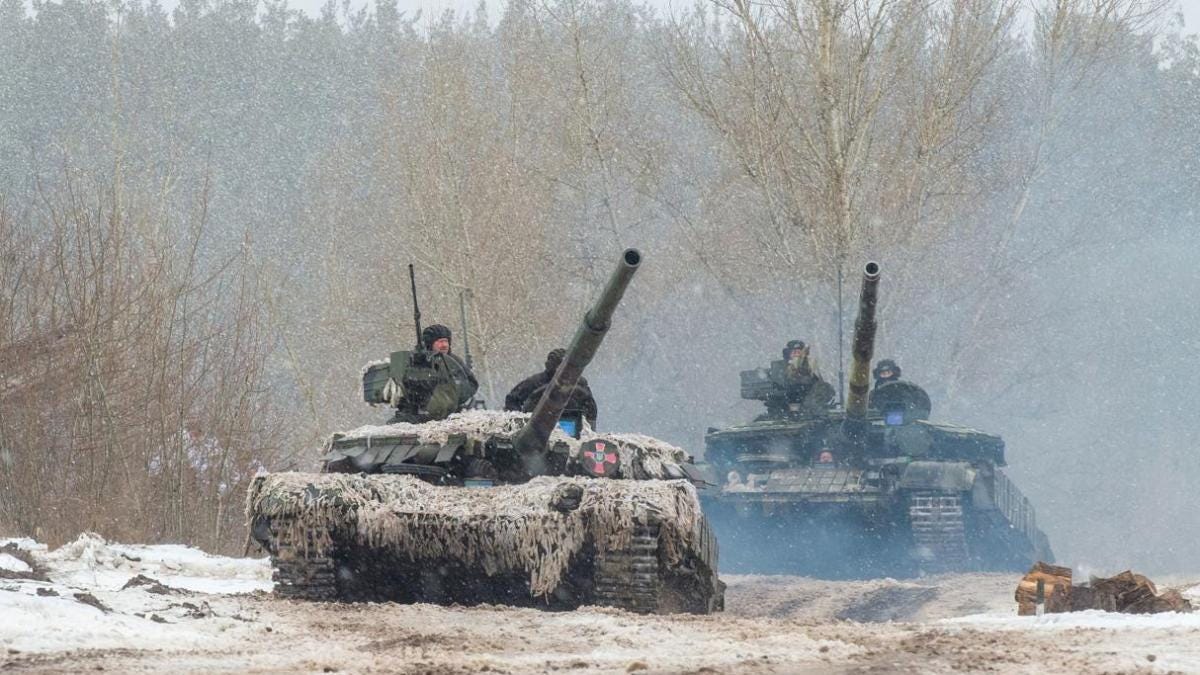News of the week
Might war threaten wetlands in Poland, Belarus, Ukraine and Russia?
Headlines around the world announce the latest developments between Russia and Ukraine. Talk of war between the two has gone on for months, with the U.S. and most of Europe governments pointing the finger at Moscow and Vladimir Putin, and claiming that they are making aggressive moves with troops building up close to the Ukraine border. Russia has also accused Ukraine of aggression, albeit on a much smaller scale. As with anything involving international politics, the story is complicated, and it doesn't seem that anything has been resolved as of late yesterday.
All this comes at a time when some folks are working hard to get protected status for Polsea, Europe’s largest wetland wilderness, a region that is shared by Poland, Russia, Belarus, and Ukraine. I't’s impossible to know, if war breaks out, whether the wetlands would be affected. Would there be dozens of tanks plowing through the peatlands? Would Russians and Ukrainians fight in the bogs and fens that comprise the wetlands?
Conservationists want the Polsea to be included as one of UNESCO’’s World Heritage sites, endowing the international region’s ecosystems with the same protections enjoyed by the Serengeti National Park and the Great Barrier Reef.
Unusual for Europe, much of the Polsea remains in pristine condition, home to eagles, lynx, bears, wolves, and bison. The region also serves as a stop-over for thousands of migratory birds. It is nonetheless threatened by deforestation, mining, and other human activities. There are also plans to construct a waterway to connect the Baltic and Black seas. Construction of the waterway could destroy much of the wilderness of the Polsea.
War
Warefare could disrupt any attempt at mining or harvesting trees from forests. It cold also disrupt plans for the waterway. And it could jeopardize Polsea getting World Heritage status. That is the nature of war. It makes the future more uncertain.
One thing that is certain, war, and just about everything about it, is bad for the environment. Even before a conflict starts, there can be immense amounts of resources poured into a nation’s military, as it builds its battleships and military helicopters. The U.S. military uses up more fossil fuels than many countries, even when it doesn’t fight a war.
A 2019 report from Brown University estimates that over the last two decades, starting with the invasion of Afghanistan in 2001, the armed forces of the the United States has emitted 1,212 million metric tons of greenhouse gases. In just one year, 2017, the military emitted 59 million tons of CO2. That is more than the entire emissions of Sweden or Switzerland.
Once fighting starts, moving around all those tanks and ships spews lots of CO2 into the atmosphere. One study found that the U.S. military used more than 50 million gallons of oil every month during the second invasion of Iraq. In crazed Catch-22 military logic, about two thirds of the fuel was used up delivering fuel to the tanks and Bradley fighting vehicles at the battlefront.
And there are the aftereffects of warfare. During the brief, first Gulf War, under George H.W. Bush, the United States bombed Iraq with 340 tons of explosives that contained depleted uranium. Increases in the rates of cancer in Iraq have been tied to this uranium.
And more that 45 years after the United States left Vietnam, agent orange still pollutes the land. The U.S. military sprayed more than 20 million gallons of the herbicide over Vietnam’s forests, wetlands, and even their farms to make the landscape look less like Southeast Asia and more like a wasteland that was easier to drive tanks through. Clearing forests also made it harder for the Vietcong to find places to hide. The substance is still found in the food chain in Vietnam, and forests sprayed with agent orange are still visibly affected by the destruction from the herbicide.
For more environmental news follow me on Twitter @EcoScripsit.




I've heard (I can't remember where) that although tanks can move through peat bogs and swamps, the trucks that are needed to supply them with gasoline and munitions can't. Russia may therefore be constrained to invade before things warm up and the support vehicles don't have hard snow and ice to drive on. So a sped-up invasion schedule may be a consequence of global warming.